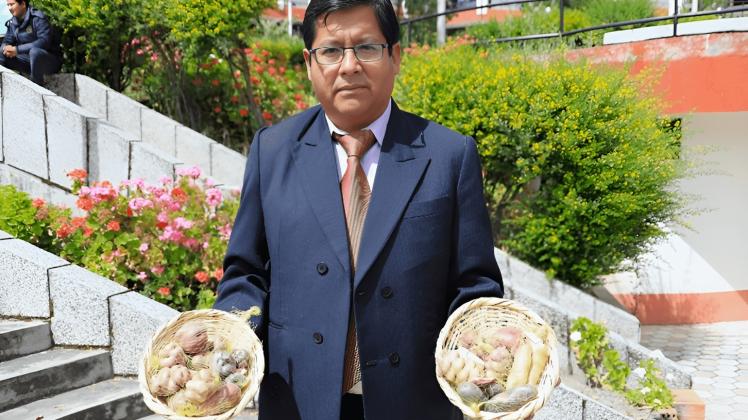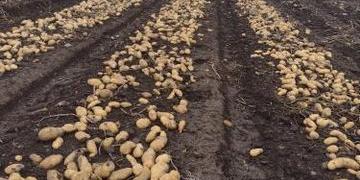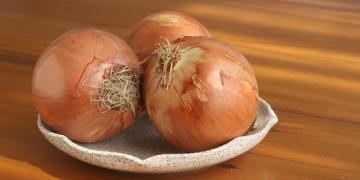Peru: Gene editing could transform potato farming
Gene editing is emerging as one of the most disruptive technologies in the field of agriculture. Its promise: to modify crops to improve their nutritional profile and make them sustainable, as well as resistant to pests, diseases, and climate change.

In Peru, this tool is already beginning to emerge as an ally in facing the challenges posed by climate change, especially for one emblematic crop: the potato.
With more than 3,500 registered varieties , the potato is not only an essential part of national food security, as the first crop of national importance, but also a symbol of Andean cultural identity. In this context, gene editing raises a debate between scientific progress and the conservation of genetic heritage.
To confront pests, diseases and climate change
Unlike genetically modified organisms (GMOs), which incorporate genes from other species , gene editing modifies an organism’s DNA within its genome, correcting or eliminating specific sequences. Tools like CRISPR allow these changes to be made precisely, opening up unprecedented possibilities for improving crops without altering their essence.
Revolutionary Technology: Blgo. Julio Vivas Bancallán, CEO of the Peruvian Seed Association (APESemillas), highlights that gene editing allows for the modification of specific plant genes to enhance or suppress certain characteristics. He emphasizes that this technology represents a crucial opportunity to address the impacts of climate change on Peruvian agriculture, such as water stress, extreme temperatures, and the increase in pests, factors that have seriously affected crop productivity.Compatible with biodiversity
The applications of gene editing are already tangible. In Argentina , INTA ( National Institute of Agricultural Technology) has developed potatoes that don’t oxidize and form less acrylamide. In Kenya and Sweden, research centers have developed varieties with greater tolerance to devastating diseases, such as blight.
“Restricting the use of this technology would be a mistake. We need a clear legal framework, based on scientific evidence , that allows for its responsible use,” Vivas argues. For him, gene editing is not only compatible with biodiversity, but can strengthen it by accelerating plant breeding processes that would otherwise take decades.
Risk to potatoes and other native crops
But not everyone shares that enthusiasm. Agricultural engineer Jorge Montalvo Otivo , professor of plant genetics at the National University of Huancavelica, warns about the risk of altering varieties that have already been perfected through centuries of natural and cultural selection.
" We can’t treat our native potatoes as if they were laboratory products. They represent an ancient heritage that deserves respect," he emphasizes. Although he doesn’t rule out their use in commercial varieties, he maintains that any genetic intervention must be carried out under strict scientific and regulatory oversight.
Biological engineer Rodomiro Ortiz, a professor at the Swedish University of Agricultural Sciences, warns about the risks of gene flow in the use of gene-edited potatoes in Peru , a country with a great diversity of native crops and wild species of the Solanum genus. Although potatoes are mostly propagated through tubers , there is a possibility that pollen from edited varieties can fertilize native or wild plants, generating botanical seeds and contributing to the spread of modified genes. This process can also occur through self-pollination or the emergence of volunteer plants from previous campaigns.
Ortiz cites a study conducted by Wageningen University (Netherlands) with European and Peruvian scientists, which detected this gene flow into wild species after using modified potatoes resistant to nematodes . This could affect biodiversity if introgression (transfer of genetic material between different species) occurs . As a solution, the cultivar "Revolución" was developed, a genetically modified and male-sterile potato (incapable of producing fertile pollen), which eliminates the risk of gene flow without slowing scientific progress.
However, Rodomiro Ortiz maintains that gene editing is emerging as a key technological tool to address the challenges facing the potato industry. This innovation would allow for the development of varieties that are more resilient to climate change and disease, thus contributing to national food security and the growth of the agricultural sector.
This approach allows for continued research using modern tools such as gene editing, without jeopardizing the genetic integrity of native potatoes or Andean biodiversity.
The Peruvian dilemma
Peru thus faces a dilemma: open the door to biotechnology to avoid falling behind in agricultural innovation, or fiercely protect its genetic diversity. The two positions are not mutually exclusive, but they require a broad, informed, and participatory debate.
"We need modern regulation, dialogue between science and tradition, and political will to take advantage of this tool without betraying our biological and cultural wealth," concludes Vivas.
In a context of climate change, pressure on soils, and growing demand for food, gene editing could become a vital tool. But only responsible, transparent, and participatory management will ensure that its benefits reach the countryside without jeopardizing what we value most: our roots.
Fuente: agroperu.pe




